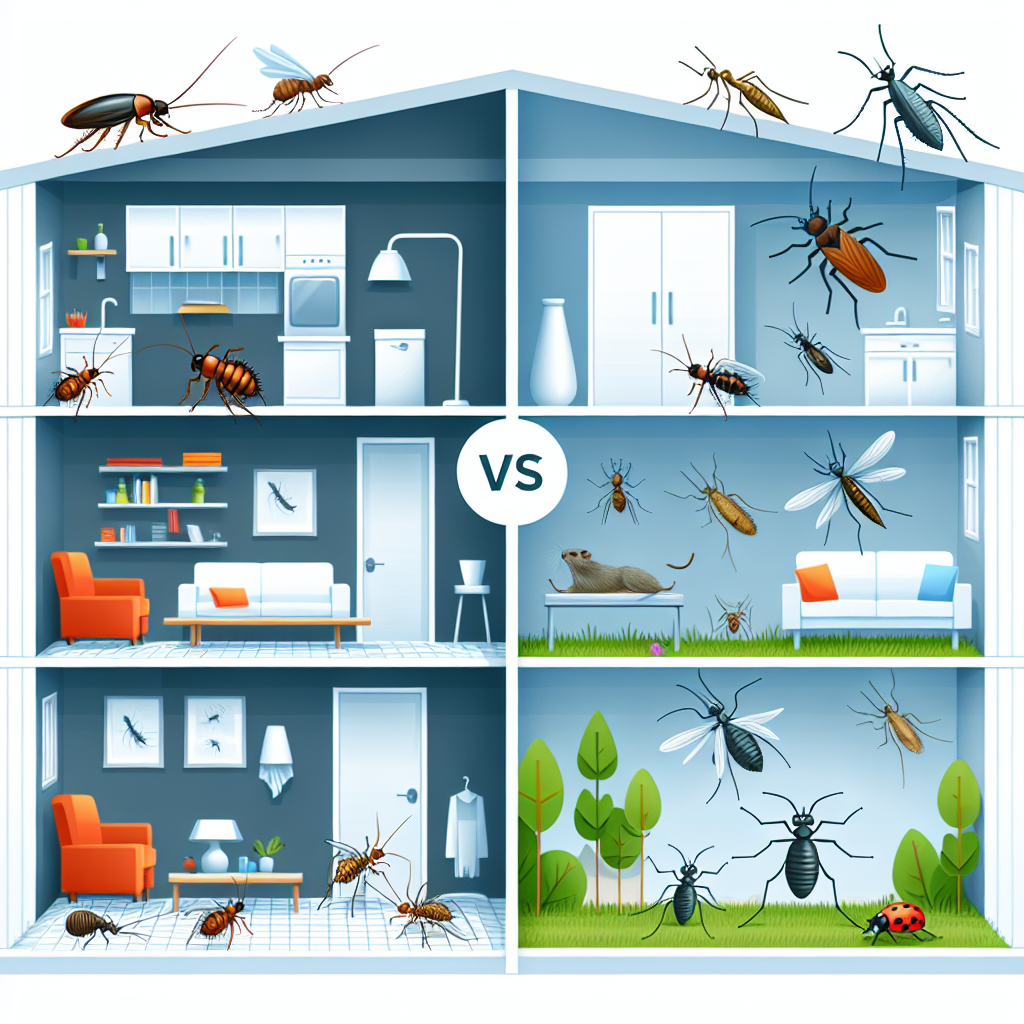Whether you’re a homeowner, a renter, or simply someone who enjoys spending time in nature, understanding the differences between indoor and outdoor pests is crucial. Not only can this knowledge help you manage infestations effectively, but it can also help prevent potential problems in the first place. In this article, we will delve into the unique characteristics of indoor and outdoor pests, helping you recognize the differences and maintain a pest-free environment.
What Are Indoor Pests?
Indoor pests are critters that thrive in human-made environments. They have adapted to living inside our homes, seeking shelter, food, and moisture. Common indoor pests include:
- Cockroaches: Known for their resilience, these pests can be found lurking in kitchens and bathrooms, feeding on food remnants and organic material.
- Bed Bugs: These tiny nocturnal creatures feed on human blood and are often found in mattresses, bedding, and upholstery.
- Ants: Various species may invade your home, searching for food sources. They can be seen marching in lines toward crumbs and spills.
- Termites: Silent destroyers, termites can cause significant structural damage to homes by feeding on wood.
- Rodents: Mice and rats are notorious for entering homes to find food and warm shelter.
Why Indoor Pests Intrude
Indoor pests invade human habitats primarily for three reasons: food, moisture, and shelter. Cluttered spaces, unsealed food items, and high humidity levels provide the perfect conditions for these pests to thrive. Understanding their motivations is the first step to preventing them from entering your home.
What Are Outdoor Pests?
Outdoor pests are creatures that primarily live in natural environments. They play various roles in the ecosystem but can also invade our yards and gardens. Common outdoor pests include:
- Mosquitoes: These pesky insects breed in standing water and are known for their itchy bites.
- Beetles: From garden beetles to wood-boring beetles, they can cause damage to plants and trees.
- Wasps and Hornets: Social pests that build nests in trees or on structures, they can become aggressive if provoked.
- Ticks: Often found in grassy and wooded areas, ticks attach to hosts to feed on blood, posing health risks like Lyme disease.
- Ants: Some ant species are beneficial outdoors, helping break down organic material, but they can also invade homes in search of food.
Why Outdoor Pests Are Problematic
Outdoor pests can threaten not only your garden and lawn but also infiltrate your home. They are often drawn indoors by the same factors that attract indoor pests: food and shelter. If left unchecked, outdoor pests can lead to larger infestations inside the home.
Key Differences Between Indoor and Outdoor Pests
While both indoor and outdoor pests can invade your living space, there are key differences in their behaviors, habitats, and management strategies.
Habitat Preferences
Indoor Pests: These pests are adapted to life within the confines of our homes. They prefer the warmth and protection of indoor environments, where they can find food and moisture relatively easily.
Outdoor Pests: These creatures typically thrive in natural settings such as gardens, forests, and fields. They are accustomed to varying weather conditions and can often disappear or hibernate when the environment becomes unfriendly.
Feeding Habits
Indoor Pests: Most indoor pests have a diet that consists of organic materials like food residues, human hair, or wood. Their proximity to humans means they often rely on what we leave behind.
Outdoor Pests: Outdoor pests tend to feed on plant material, other insects, or organic matter found in the soil. Many outdoor pests fulfill an ecological role, such as pollinators or decomposers.
Control Measures
Indoor Pest Management: To keep indoor pests at bay, employ methods such as sealing entry points, maintaining cleanliness, using traps, and, if necessary, calling an exterminator for stronger solutions.
Outdoor Pest Management: For outdoor pests, implement barrier methods like planting pest-resistant plants, using insect repellents, and maintaining a clean garden. Encouraging natural predators can also help control populations.
Prevention Tips for Both Indoor and Outdoor Pests
Maintaining a Clean Environment
The best way to prevent both indoor and outdoor pests is to maintain a clean space. Regularly cleaning your home and yard can deter infestations. For indoor spaces, make sure to:
- Seal airtight containers for food storage.
- Vacuum regularly and keep areas free of debris.
- Dispose of garbage properly and promptly.
For outdoor spaces, consider:
- Keeping gardens tidy and free of fallen fruits or vegetables.
- Regularly mowing the lawn and trimming plants to reduce hiding spots.
- Using mulch and compost wisely to discourage pests.
Sealing Entry Points
Inspect your home for cracks or gaps that pests can exploit. Caulk and seal holes around windows, doors, and foundations, using door sweeps and screens to create a barrier against intruders.
Professional Help
If you’re facing a significant pest problem, don’t hesitate to reach out to pest control professionals. They bring expertise and tools that can tackle infestations effectively.
In Conclusion
Understanding the differences between indoor and outdoor pests is essential for effective pest management. By being aware of their behaviors, diets, and prevention strategies, you can create a pest-free home and garden. Regular cleaning, preventive measures, and professional help when needed can keep your living spaces comfortable and safe. Stay informed, stay proactive, and you’ll ensure your home remains a haven rather than a habitat for unwanted pests.
By fostering this knowledge, homeowners can feel empowered and better equipped to maintain a pest-free environment, enhancing their quality of life while ensuring peace of mind.


